Test JP-Australia Magic Air 150 - inflatable revolution!
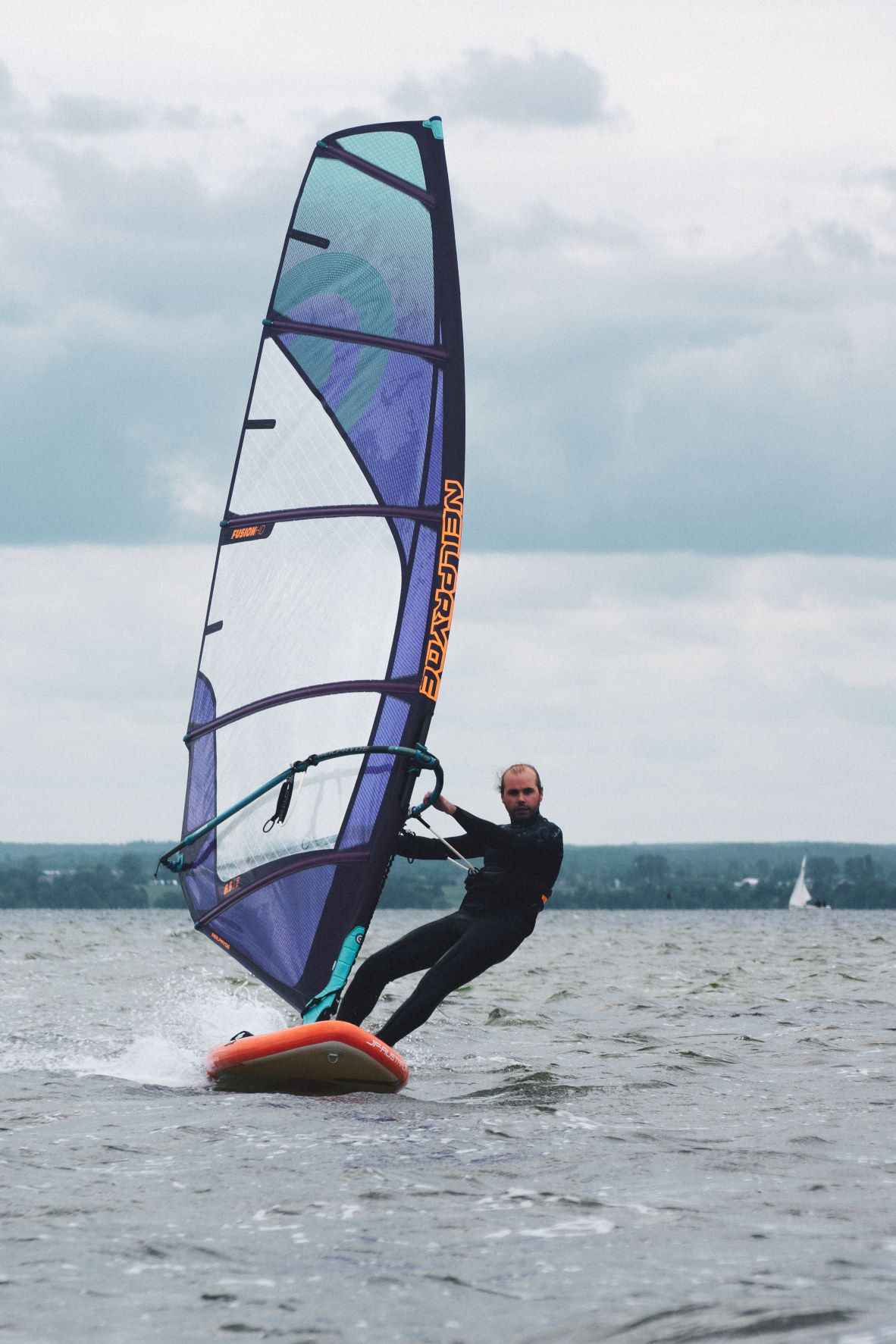
During the long weekend, we had the opportunity to test an inflatable board for the family, designed strictly for windsurfing. I didn't believe in this concept myself, and in the fact that such a board can glide, or even give so much pleasure! But more on that later. First some information. We had a JP-Australia Magic Air 150 board at our disposal, and a NeilPryde Fusion HD sail in the size of 6.5 m2. I would like to point out right away, that I usually use a freestyle set: 93l board and sails in sizes 4.0 - 4.8, so the test set quite differ from mine 😉 In the JP Magic Air set we have 4 foot straps, a RIDE 44cm fin made in Glass technology, a pump and a repair kit. Folded board (with attached straps) fits into the backpack the same as inflatable SUPs, so no more fighting with luggage straps and a roof rack. The backpack itself is well made with high-quality materials, and the large and strong wheels, which make it easy to carry. The whole thing, i.e. the board, backpack, pump and accessories, weighs approx. 15 kg.



Technical data of JP Magic Air 150:
- SE 3DS technology (Superior Edition, 3D stinger)
- Length: 250 cm
- Width: 84 cm
- Thickness: 5 "(12.7 cm)
- Volume: 200l
- Weight: 10.4 kg
- Fin: Ride 44 cm Glass, Power Box
JP Magic Air 150 resembles modern freeride boards in size and shape, thanks to which its performance is quite similar, and at a glance the board seems somehow short. However, the 150 marking in Magic Air does not reflect its true volume, which is 200 liter. Nevertheless it feels comparable to 150l composite boards. The shape of the board is very similar to the Magic Ride Family model (both boards have very similar dimensions), but thanks to its greater buoyancy, the board is easier and forgives more mistakes than its stiff counterparts.


The Magic Air is made in SE 3DS technology, that is a three-layer, welded drop-stitch, which makes it extremely durable, and the 3D STINGERS protect the sides, additionally stiffening the entire structure. The deck in Magic Air is in 2/3 covered with EVA foam (more or less from the area around the pallet), which protects against falls, and the characteristic diamond texture reduces the risk of slipping. The different colors of the deck act as a guideline for newcomers as to where to stand and how to position their feet. Bearing in mind the different level of user advancement, the manufacturer has prepared two options for setting the foot straps. One for beginners, allows to attach 3 straps closer to the center of the board. The second option for advanced riders allows 4 straps that are placed closer to the stern and more to the outside of the board, and this setting was also used during testing. In the middle of the board you will find a handle, which makes it easier to carry it alone, and combined with the low weight it becomes really easy.


Looking at the bottom of the board, going from the nose, we can notice a delicate rocker line, which gradually flattens out. Approximately from the middle of the bottom, the side is surrounded by a hard edge made of layers of PVC fabric and laminate. Such a finish results in more efficient water release, and thus the board gains speed more boldly and slides more easily. At the stern, there is a solid deck with integrated Power Box, so we can also easily mount an anti-grass here. We had the opportunity to test it with an anti-grass and the board also worked well, but because of this type of fin, you had to be more careful about the spin outs, which requires a bit more commitment on our part to go out with such a wide board.
The conditions in which we tested the board were west wind of around 13-24 knots, and the spot was the Puck Bay. The testers were three windsurfers weighing from 50 to 85 kg and each of us flew without any problems (with 6.5 NP Fusion quickly becoming too big for the lightest Magda). On land, due to its size, and above all its thickness, the board may seem rather clunky, but after the first few tacks, this belief quickly disappears, and a big smile appears on your face instead (I remind you of freestyle attitude!). Thanks to its buoyancy and compact shape, the board is super stable and you can easily learn from scratch on it. The only problem will be the lack of a dagger, so it might be a little harder for novices to hold their height at first.


In the aforementioned conditions, the board was able to plan easily and willingly. The volume reserve and the flat bottom were conducive to passive planing. All the testers noticed that: "as soon as we feel that the board is accelerating, we just need to put our foot in the forward strap and sheet in the sail, and the board itself was willing to go into the glide." The board, with its dimensions, and above all with the mentioned thickness and width, accelerates a bit sluggishly, but still achieves a very decent final speed, we even managed to exceed 40 km / h! Its thickness also gives the impression that we are high above the water and indeed in full glide the board emerges strongly, so controlling the board in overpowered conditions requires a bit of experience and technique. The inflatable deck and the soft EVA foam finish makes crashes a lot softer both for us and the board 😉. In the glide itself, despite the 200l volume, it is easy to handle and go upwind. The tack position is pleasant, the footstraps are in good places, so we can safely go for longer tacks. Personally, I was very positively surprised by how the Magic Air is doing on upwind courses, and the speed itself was also there. However, you need to remember to guide the board relatively flat on the water in order to actually be able to use this stiff edge on the bottom. When we start to press the rail of the board too hard, the board immediately slows down and starts splashing. It is very important during carve jibes, where we have to lead the board flat and exit the jibe in a larger arc so that you won’t lose much speed and keep the board in the glide. The board is definitely not as stiff as composite boards and it works gently all the time, but even the larger bay chop farther from the shore was not terrible. Already after a few tacks, I stopped paying attention to it, and even felt less strain on the knees and spine while gliding through the chop, and the same was stated by the oldest tester at the age of 60.
Despite all my skepticism at the start, I have to admit that JP-Australia Magic Air is a really good, full-fledged windsurfing board. The number of advantages that an inflatable board has, especially for a recreational user, definitely exceeds its lack of stiffness of a composite board (which we seriously get used to). Certainly it is not a board that we will win the races, but the control, ease of plaining, or the fact that it fits in a really reasonable size of a backpack (!) Compensate for the lower acceleration and a slightly more difficult gybes. High volume allows people of different levels to use it, and thankfully to the fact that it is an inflatable board, we approach maneuvers much more boldly. All the testers mentioned that even for a moment they did not worry about the risk of damaging both themselves and the board, which made the sessions on the water even more fun. I sincerely regret that I had to part with JP Magic Air, because it is a really cool board that can give a lot of fun to the whole family!
PS After the tests, the oldest tester is thinking of changing his 145l freeride board to JP-Australia Magic Air, so seriously it's a great board that works! : D

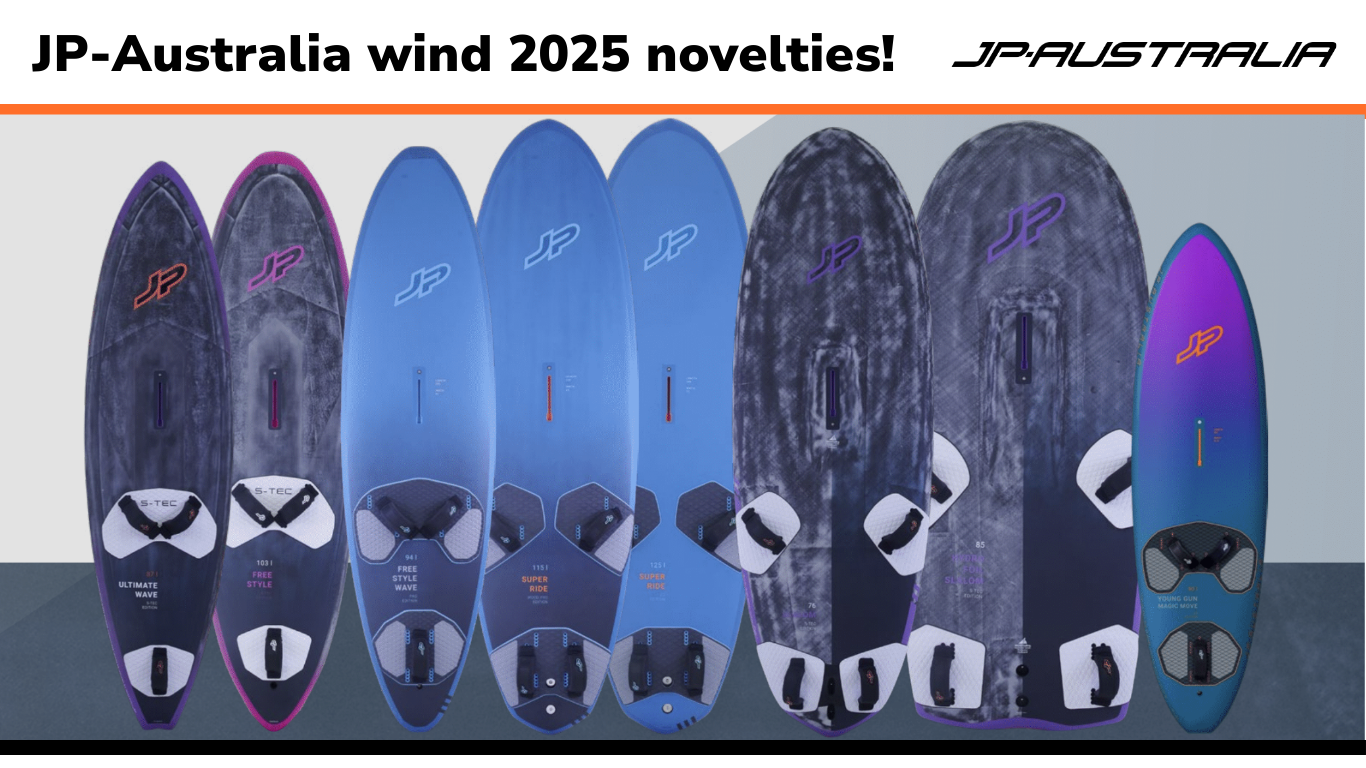
JP-Australia’s 2025 Innovations – Collection Overview!
JP-Australia, a leader in the windsurfing industry, has just revealed its 2025 collection, bringing new technology, updated shapes, and innovative boards to elevate the water sports experience. From the groundbreaking S-TEC construction to enhanced designs of classic models and specially crafted boards for kids, the brand continues to focus on quality and excellence in every detail. Read on for a closer look!
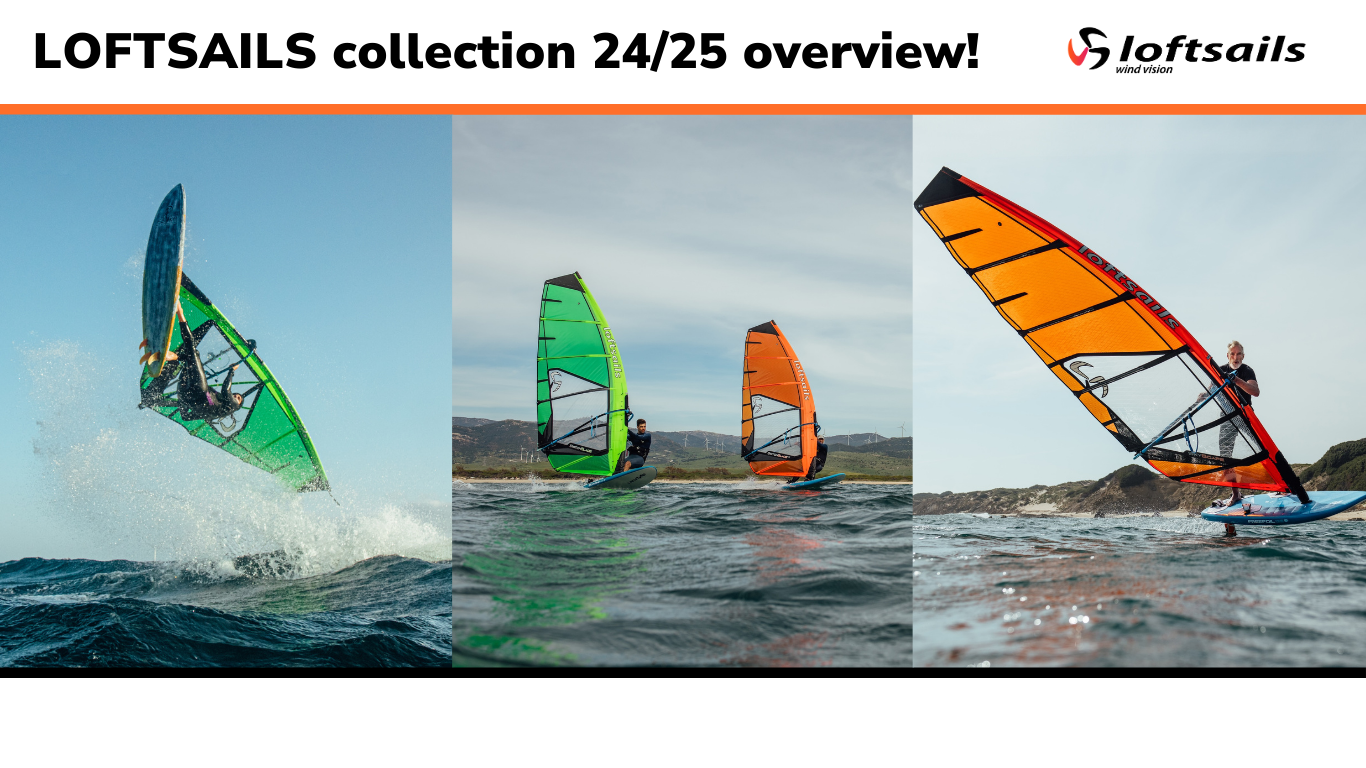
Loftsails 24/25 collection
We are thrilled to present the latest 24/25 Loftsails collection, now available for pre-order! This exciting line results from innovative technologies and years of experience that Loftsails has gathered in the world of windsurfing. Get to know the description of each model.

PLKB 2025 Collection – Kites and Gear for Kitesurfing, Snowkiting, and Landkiting!
Since we have launched preorders for 2025, and we are excited to present the entire collection from PLKB (Peter Lynn Kiteboarding). For years, this brand has been offering high-quality gear for kite, snow, and land kiting, allowing every kite sport enthusiast to find something suited to their needs, regardless of the terrain or season. PLKB’s extensive experience in creating kites that exceed expectations sets them apart, making every session enjoyable and thrilling. PLKB has taken on the challenge of outperforming major brands, overcoming all obstacles along the way.
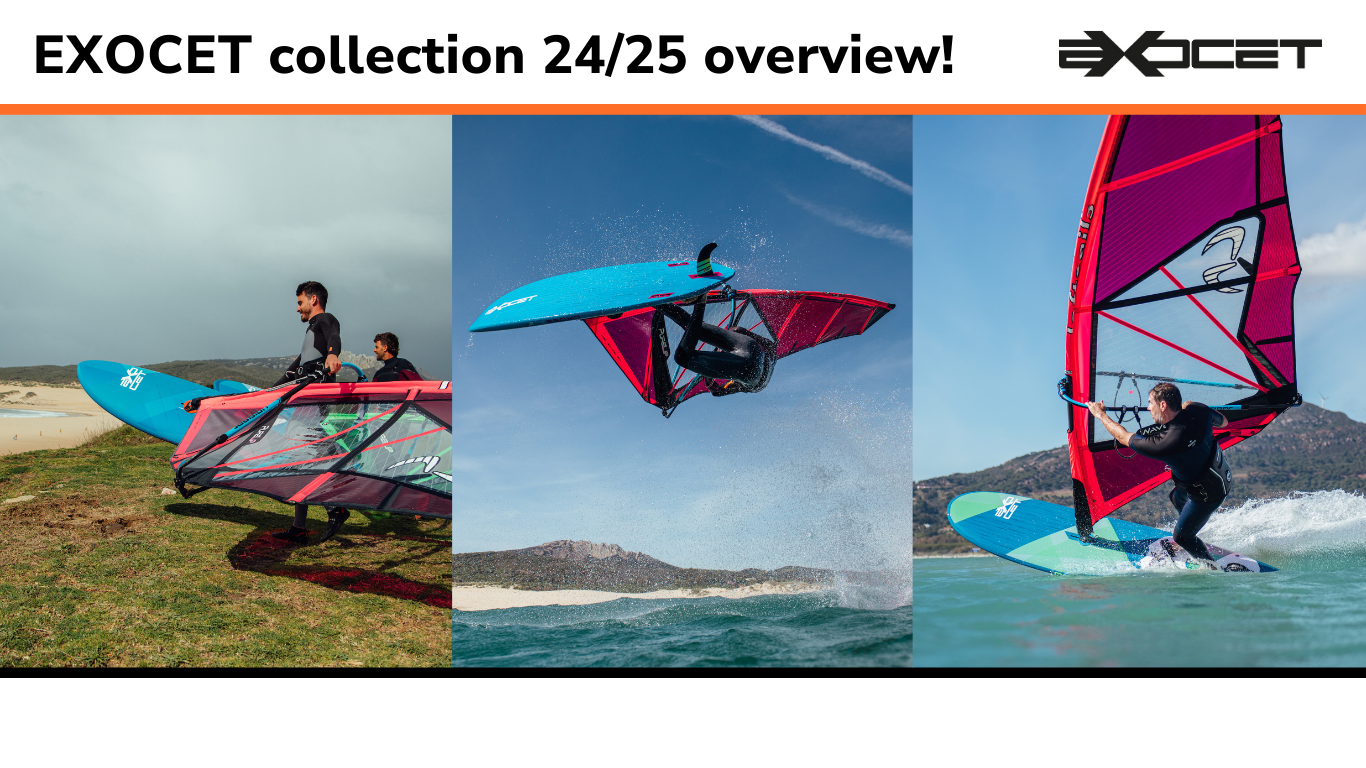
Exocet boards collection review for 2024/2025. Available for pre-order!
Meet EXOCET's collection of windsurfing boards for the 2024/ 2025 season, which is now available in pre-order! In the range of this french brand you will find constructions for classic windsurfing on the fin, as well as for foil. In this article we will acquaint you with the individual models to help you choose the right equipment for yourself ;) Don't hesitate to sign up for a preorder and get the latest model at a favorable price!
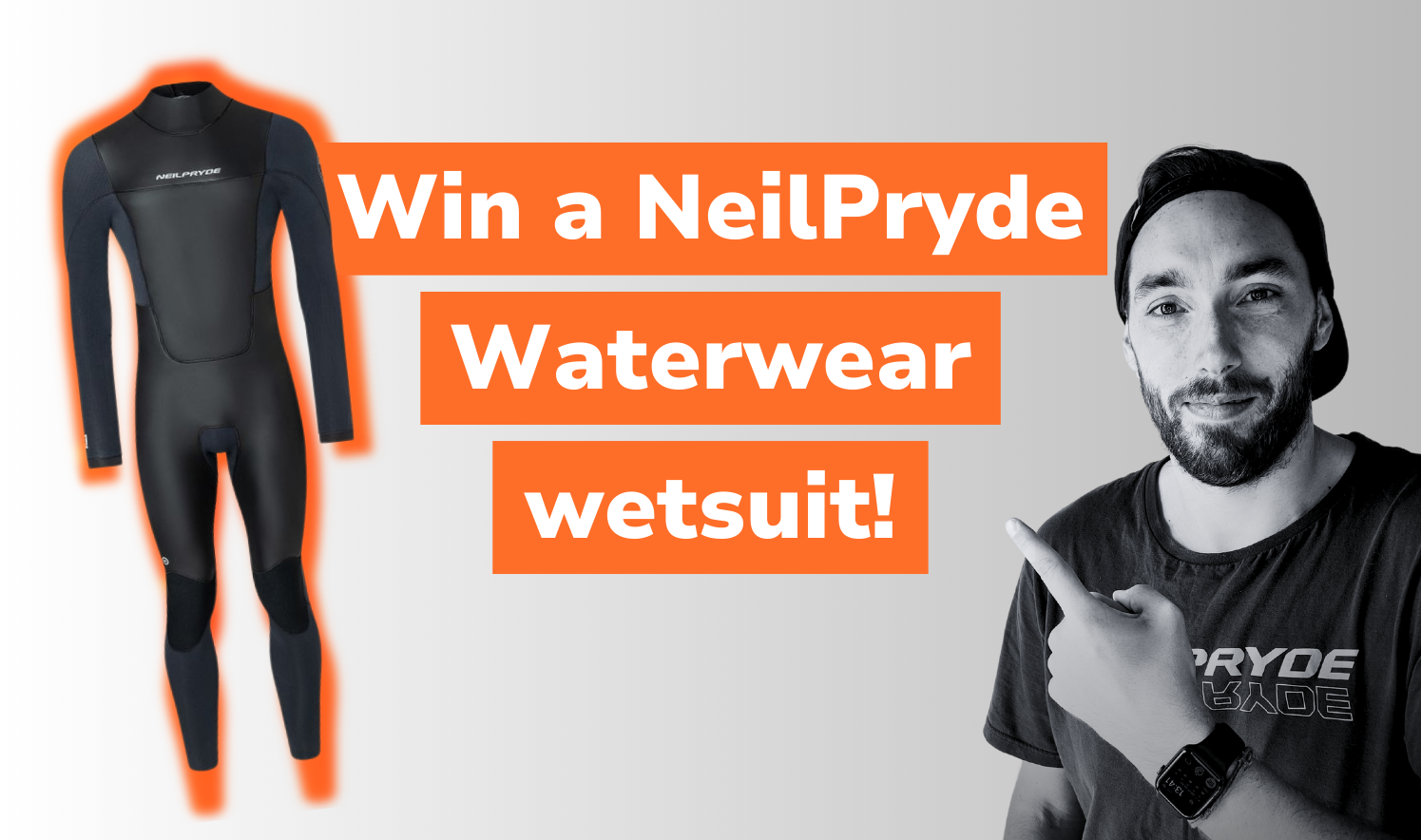
Win a NeilPryde Waterwear wetsuit!
Together with NeilPryde Waterwear, we're announcing a contest where you can win any wetsuit from the NeilPryde's range. Check the details below:
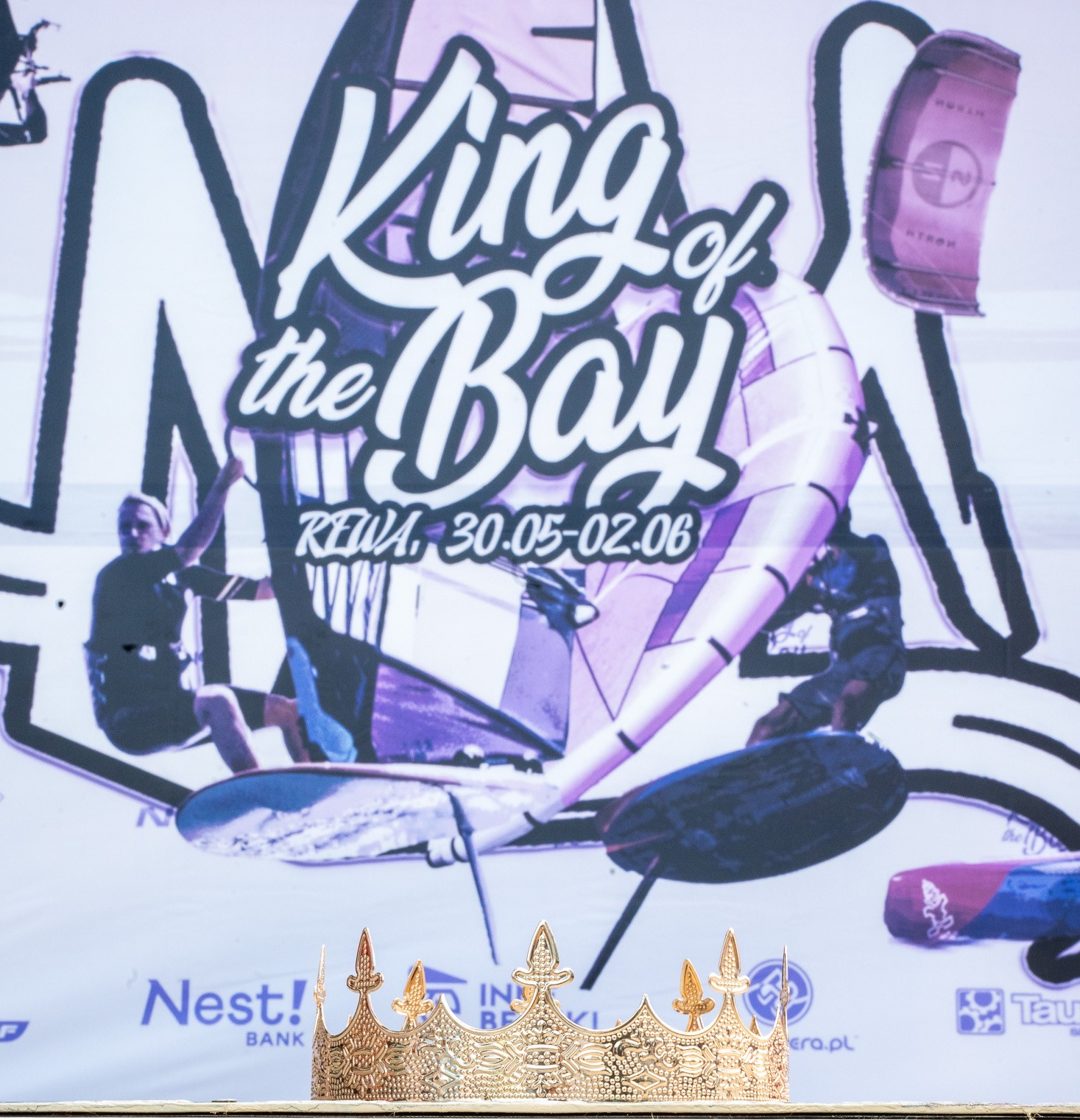
King of the Bay report!
What a weekend it was!!! 🤩 Rewa welcomed us royally! For four days, we enjoyed beautiful sunshine and conditions that allowed us to not only hold the planned races but also to carry out all other activities. The turnout exceeded our wildest expectations. Over 240 competitors registered for the event, and in addition to the participants, crowds of water sports fans flocked to Rewa. Everyone came with one goal: to spread passion and love for windsurfing, kitesurfing, wing foiling, SUP, and pump foiling! I'm still not fully recovered from this magical water sports festival, but the boost of positive energy and motivation we received, both myself and our entire EASY-surfshop team... It's simply indescribable! So much happened during these four days, and the event itself could be divided into two parts: racing and festival-market, which I'd like to briefly present to you.

What kind of wetsuit to choose? - learn tips to help you choose the right wetsuit
Are you planning to embark on a windsurfing, kit or foil adventure? If so, the first thing you will need is definitely a neoprene wetsuit, it will be an integral part of your equipment. The variety of wetsuits on the market can be overwhelming, so we'll give you a brief overview of the key elements when choosing the right one, but let's start with what exactly are they?
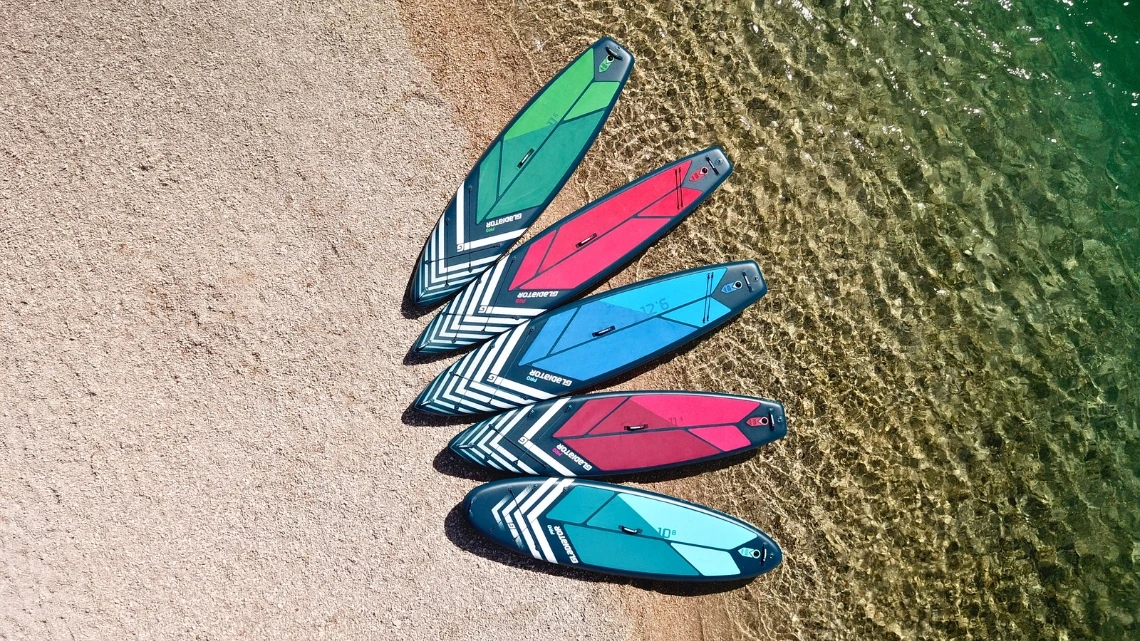
Gladiator SUP board collection review for 2024
SUP is an increasingly popular water sport that combines elements of recreation, training and adventure. If you're passionate about water activities, you've certainly heard of the Gladiator brand. Take a virtual tour of their SUP board collection for 2024!















 Facebook
Facebook Instagram
Instagram YouTube
YouTube